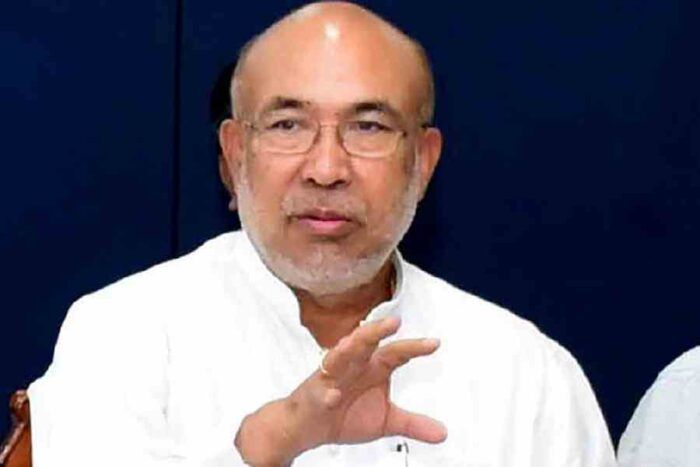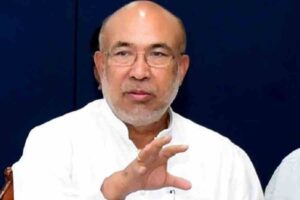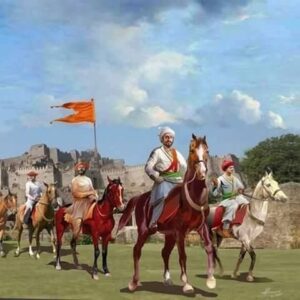The Syrian War: Tracing the Roots, Players-Kp
The Syrian War: A Comprehensive Analysis
The Syrian conflict, which began in 2011, has become one of the most devastating and complex wars of the 21st century. It has involved numerous domestic factions, regional players, and global superpowers, leading to a humanitarian crisis of unprecedented proportions. This article delves into the origins of the conflict, the key players and alliances, and its far-reaching consequences.

Origins of the Syrian War
The Syrian war traces its roots to the wave of pro-democracy uprisings known as the Arab Spring, which swept across the Middle East and North Africa in late 2010. These uprisings, fueled by widespread discontent with authoritarian regimes, poverty, and lack of freedoms, inspired Syrians to demand reforms from President Bashar al-Assad’s government.
The spark that ignited the conflict came in March 2011 in the city of Daraa. A group of teenagers was arrested and reportedly tortured for painting anti-government graffiti on a school wall. The slogans, which called for freedom and the downfall of the regime, symbolized the growing frustration of the Syrian people. The arrest of these teenagers led to mass protests in Daraa, which were met with brutal force by government security forces, resulting in deaths and injuries. This crackdown further inflamed tensions, sparking protests across the country.
What began as peaceful demonstrations for democratic reform quickly escalated into a violent conflict as the Assad government refused to concede to protesters’ demands. The use of force by the regime prompted the formation of opposition groups, leading to the emergence of an armed rebellion.
Key Players in the Conflict
Domestic Actors
- The Syrian Government President Bashar al-Assad’s regime has remained the central force in the conflict, determined to retain power. Backed by a well-equipped military, the government initially sought to crush the uprising but later had to contend with multiple rebel factions and terrorist groups.
- Opposition Groups The opposition consists of a wide array of groups, ranging from moderate factions like the Free Syrian Army (FSA) to extremist organizations such as the al-Nusra Front and ISIS. These groups, often fragmented and ideologically diverse, have struggled to present a united front.
- Kurdish Forces The Kurds, primarily represented by the Syrian Democratic Forces (SDF) and its leading faction, the People’s Protection Units (YPG), have fought for autonomy in northern Syria. They have also played a key role in combating ISIS.

Regional Players
- Iran Iran has been a staunch ally of the Assad regime, providing financial aid, military advisors, and fighters through its proxy groups, including Hezbollah.
- Turkey Turkey has supported various rebel groups while opposing Kurdish autonomy along its border. It has conducted military operations in northern Syria, targeting both ISIS and Kurdish forces.
- Saudi Arabia and Gulf States These countries have supported Sunni rebel groups in an effort to counter Iranian influence in Syria.
- Israel While Israel has largely stayed out of direct involvement, it has conducted airstrikes targeting Iranian and Hezbollah positions in Syria, citing security concerns.

Global Powers
- Russia Russia has been a key supporter of Assad, providing military support, including airstrikes, to help the regime regain control of territory. Moscow’s involvement has been driven by strategic interests, including maintaining its naval base in Tartus.
- United States The U.S. initially supported moderate opposition groups and later focused on combating ISIS. It has also backed Kurdish forces, creating tensions with Turkey.
- European Union EU countries have provided humanitarian aid and imposed sanctions on the Assad regime but have largely refrained from direct military involvement.


The Complexity of Alliances
The Syrian war has been marked by a web of shifting alliances and rivalries:
- Iran and Russia have collaborated to support Assad, but their long-term goals in Syria differ.
- Turkey’s dual role as both a NATO member and a supporter of certain rebel factions has complicated relations with the U.S. and EU.
- The U.S. alliance with the Kurds has strained ties with Turkey, a fellow NATO member.
Humanitarian Crisis
The war has caused immense suffering:
- Over 500,000 people have been killed. Among these, it is estimated that over 25,000 were children, around 50,000 were women, and the rest were primarily men. These numbers highlight the devastating toll on families and communities.
- More than 13 million Syrians have been displaced, with millions seeking refuge in neighboring countries and Europe.
- Entire cities, including Aleppo and Homs, have been reduced to rubble.
Human rights violations, including chemical attacks, mass executions, and sieges, have been widespread. The UN and various NGOs have documented atrocities committed by all sides.

The Role of ISIS
The emergence of ISIS added a new dimension to the conflict. Capitalizing on the chaos, ISIS seized large swathes of territory in Syria and Iraq, declaring a “caliphate” in 2014. This prompted an international coalition, led by the U.S., to intervene militarily. While ISIS has been largely defeated, remnants of the group remain active, posing a continued threat.

International Diplomacy and Peace Efforts
Numerous attempts to broker peace have been made, including:
- The Geneva Talks: Initiated by the UN, these talks aimed to negotiate a political solution but achieved limited success due to the intransigence of key players.
- The Astana Process: Led by Russia, Turkey, and Iran, this initiative focused on de-escalation zones but failed to end the violence.
- UN Resolutions: Multiple resolutions have called for ceasefires and humanitarian aid access, often obstructed by vetoes in the UN Security Council.
The Impact on Global Politics
The Syrian war has had significant geopolitical ramifications:
- Proxy War Dynamics: The conflict has become a battleground for regional and global powers, exacerbating tensions between the U.S., Russia, and Iran.
- Refugee Crisis: The influx of Syrian refugees has strained resources in host countries and fueled political debates in Europe.
- Terrorism: The rise of ISIS and the flow of foreign fighters to Syria have heightened global security concerns.

The Future of Syria
Despite the Assad regime regaining control over much of the country, Syria remains deeply divided. Reconstruction efforts are hampered by ongoing violence, economic sanctions, and a lack of international consensus. The prospects for a unified, stable Syria seem distant as various factions and foreign powers continue to pursue their interests.
Hamza al-Khatib, a 13-year-old boy, played a symbolic role in the early stages of the Syrian war. He became a tragic figure after his brutal death at the hands of Syrian security forces in April 2011. Hamza was reportedly detained during a protest in Daraa and later tortured to death, with his body showing signs of severe abuse when returned to his family. His death became a rallying cry for protesters, further fueling the uprising against the Assad regime.
If you’d like, I can incorporate details about Hamza’s role into the article to emphasize his impact on the conflict’s early momentum.
The Syrian War’s Impact on Russian and U.S. Politics
The Syrian war has significantly shaped the geopolitical strategies and domestic politics of both Russia and the United States. This ongoing conflict has underscored competing interests, highlighted weaknesses in foreign policy approaches, and contributed to shifting alliances and power dynamics on the global stage.
Russia’s Perspective
- Strategic Gains: Russia’s involvement in Syria has been pivotal in reasserting its influence in the Middle East. By providing military and political support to Bashar al-Assad, Russia has ensured its continued presence in the region, particularly through its naval base in Tartus and the Khmeimim Air Base. These are crucial for projecting Russian power in the Mediterranean and beyond.
- Counterterrorism Justification: Russia has justified its intervention as a fight against terrorism, particularly targeting groups like ISIS and the al-Nusra Front. This narrative has bolstered its international image as a key player in combating extremism, even as critics argue its primary aim is to prop up the Assad regime.
- Domestic Political Gains: President Vladimir Putin’s assertive stance in Syria has been framed domestically as a demonstration of Russia’s resurgence as a global power. This has helped consolidate his leadership and bolster national pride among Russians, portraying the country as a counterbalance to Western influence.
- Challenges:
- The cost of prolonged military engagement has strained Russia’s resources.
- Increasing tensions with Turkey, a key regional player and NATO member, over Syria have complicated its strategy.

U.S. Perspective
- Policy Shifts: U.S. involvement in Syria has shifted over the years, from supporting moderate opposition groups against Assad to focusing on the defeat of ISIS. This change reflects both the complexity of the conflict and domestic political pressures to limit direct engagement.
- Alliances Tested: The U.S. support for Kurdish forces in Syria, particularly the Syrian Democratic Forces (SDF), has strained relations with Turkey, a NATO ally. This tension highlights the challenges of balancing regional alliances while pursuing strategic objectives.
- Criticism of Policy Inconsistencies: U.S. policy in Syria has been criticized for being inconsistent and reactive. Decisions such as the sudden withdrawal of troops in 2019 were seen as abandoning allies like the Kurds and ceding influence to Russia and Iran.
- Domestic Repercussions: The Syrian conflict has fueled debates in U.S. politics about interventionism versus isolationism. While some advocate for a robust presence to counter Russian and Iranian influence, others argue for prioritizing domestic issues over costly foreign engagements.

Shared Consequences
- Proxy War Dynamics: Syria has become a proxy battlefield, exacerbating tensions between Russia and the U.S. and deepening divisions on the global stage.
- Humanitarian and Moral Challenges: Both nations face criticism for failing to prevent the humanitarian disaster in Syria. This failure has tarnished their reputations and raised questions about their roles as global leaders.
In summary, the Syrian war has served as a litmus test for Russian and U.S. foreign policy. While Russia has leveraged the conflict to enhance its strategic standing, the U.S. has grappled with the challenges of maintaining influence amid shifting priorities and alliances. Both nations remain deeply entangled in the conflict’s geopolitical and moral implications.
Conclusion
The Syrian war, rooted in a desire for freedom and reform, has devolved into a multifaceted conflict with devastating consequences. While the immediate triggers of the war may have been local, its escalation into a proxy war reflects broader geopolitical rivalries. As the world grapples with the aftermath, the lessons of Syria underscore the need for more effective mechanisms to prevent and resolve such conflicts in the future.













Post Comment